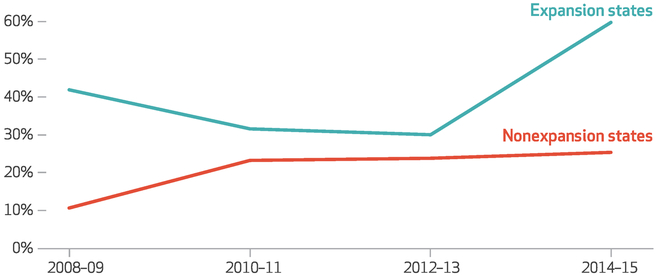Exhibit 3. Percent of low-income adults with selected substance use disorders who received any substance use disorder treatment in the past year and who were covered by Medicaid in 2008–15, in states that did and did not expand eligibility for Medicaid.
SOURCE Authors’ analysis of data from the National Survey on Drug Use and Health. NOTES Low-income adults are those with incomes of no more than 138 percent of the federal poverty level. Selected disorders are defined in the notes to exhibit 1. The results were adjusted for respondents’ age, sex, race/ethnicity, state, and education level. The increase in Medicaid coverage in nonexpansion states from 2008–09 to 2010–11 was significant (p < 0:05) and was also significantly different (p < 0:001) from the change in expansion states (defined in the notes to exhibit 1) (estimated difference-in-differences: −27.1%; 95% confidence interval: −25.34, −28.86). The increase in Medicaid coverage in expansion states from 2012–13 to 2014–15 was significant (p < 0:001) and was also significantly different (p < 0:05) from the increase in nonexpansion states in the same period (estimated difference-in-differences: 31.8; 95% CI: 10.04, 53.56).

